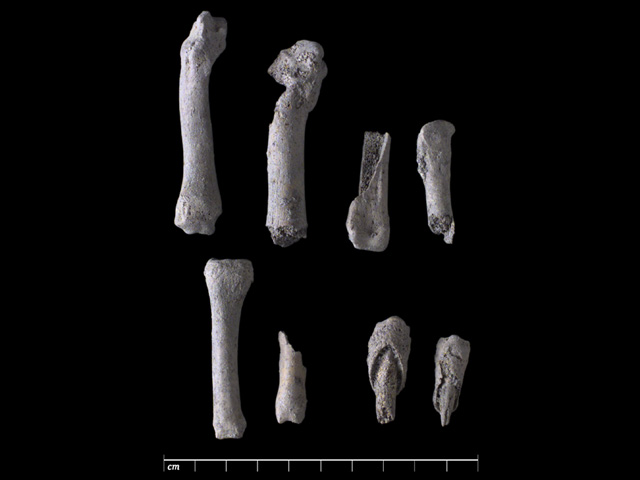 STUDIO PHOTOGRAPHS
STUDIO PHOTOGRAPHSIntroduction | Research | People | Tools
 STUDIO PHOTOGRAPHS
STUDIO PHOTOGRAPHS
SEAL BONES (TYA 642: 351d)
Type: Bones of seal (Phocidae sp.).
Use: Game animal (faunal residue).
Site: Raisio, Ihala, Mulli abode.
Period: Viking Age/ Crusade Age / Early Middle Ages.
Dating: 980-1220 A.D.
Photographer: Antti Huittinen.
This picture shows four metacarpal/metatarsal bones of a seal on the left, on the right side, two phalanges and two claw bones.
Grey seals and ringed seals were important prey already in the Stone Age. With varioius hunting methods, people were able to hunt seals during 9 - 10 months in a year. However, the emphasis of hunting was during the late winter, from February to April.
The animal was preyed for on the frozen sea. When it came to breath on the ice-hole, it was easily killed with a spear or harpoon. In the summer and autumn, seals were trapped with nets. The flesh, entrails, and blood of the seal were used as food. The seal fat could be used as oil. The leather was used to make clothes, and shoes.
Other related topics:
Coordinates: x=99-103, y=501-503, unit 1175a.
Introduction | Research | People | Tools